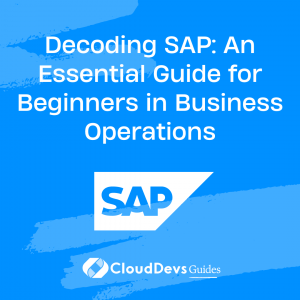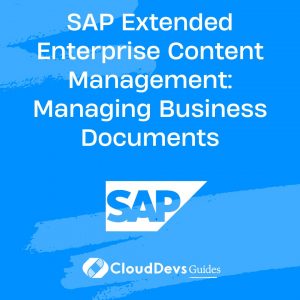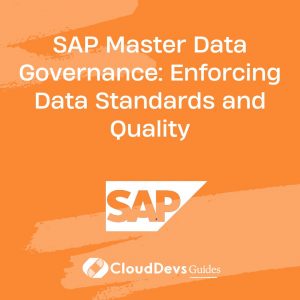Decoding SAP: An Essential Guide for Beginners in Business Operations
In the world of business, the ability to analyze, process, and interpret data is not just beneficial—it’s essential. One of the key players in this field is SAP (Systems, Applications, and Products in Data Processing), a German multinational software corporation that produces enterprise software to manage business operations and customer relations. With more than 440,000 customers in over 180 countries, SAP is the world’s largest provider of Enterprise Resource Planning (ERP) systems. Due to its complexity and extensive functionality, businesses often need to hire SAP developers to fully leverage this powerful tool. This blog post will serve as a comprehensive guide for beginners, providing an introduction to SAP and its operation. We’ll also look at practical examples of SAP in action to help illuminate its real-world applications and show why the expertise of SAP developers is highly sought after in today’s data-driven business landscape.
What is SAP?
SAP is a software suite that businesses use to manage and integrate key business processes. SAP software acts as a centralized system that enables businesses to effectively handle operations such as inventory management, human resources, financials, sales, procurement, and customer relationship management (CRM), among others.
The primary objective of SAP is to streamline organizational processes, reduce redundancy and inefficiency, and provide a consistent and accurate view of real-time business information. SAP operates on the basis of “modules“—specialized packages designed to interact and integrate with other modules, thereby enhancing business operations.
The Modules of SAP
SAP consists of numerous modules that cater to various aspects of business operations. Some of the key SAP modules include:
- SAP Financial Accounting (FI): This module helps companies manage their financial transactions, financial statements, and accounting needs in real-time. For instance, a retail store could use the SAP FI module to record sales transactions, manage their balance sheet, and generate financial reports.
- SAP Controlling (CO): This module complements the FI module, aiding in planning, reporting, and monitoring business operations. A manufacturing company might use the CO module to perform cost accounting for its products, set prices, and plan future production volumes.
- SAP Sales and Distribution (SD): This module manages all activities related to the sales and distribution of products or services. A car dealership could use this module to handle customer inquiries, quotations, sales orders, deliveries, and billing.
- SAP Human Resources (HR): This module handles processes related to human resources management, such as hiring, payroll, training, and benefits. A corporation could use SAP HR to manage employee data, track performance reviews, and process payroll.
- SAP Materials Management (MM): This module is used for managing materials and inventory in organizations. A warehouse might use SAP MM to control the quantity and quality of its stock, manage purchasing activities, and handle invoice verification.
How SAP Works: A Real-World Example
To illustrate the practical application of SAP, let’s consider a typical manufacturing company. For simplicity, we’ll focus on three primary modules: SAP Materials Management (MM), Production Planning (PP), and Sales and Distribution (SD).
- Procurement (MM Module): The company needs to acquire raw materials to produce its goods. Using the MM module, the purchasing department creates a Purchase Order (PO), which is sent to the supplier. When the goods arrive, they’re checked for quantity and quality and then recorded in the system.
- Production (PP Module): Once the raw materials are in place, the production department uses the PP module to plan and execute production based on the customer demand and current inventory levels.
- Sales (SD Module): When the products are ready, the sales department uses the SD module to manage the sales process, from the initial customer inquiry and sales order to the delivery of goods and billing.
Throughout this entire process, the relevant data is entered into the SAP system by trained professionals, often businesses hire SAP developers for this critical task. This data then gets shared and used across all departments, ensuring everyone has a consistent, real-time view of the business. The proficiency of SAP developers in managing this data flow is key to making the most out of the SAP system.
The Advantages of Using SAP
SAP brings numerous advantages to businesses, regardless of size or industry:
- Integration: SAP provides a comprehensive and integrated system that can handle multiple aspects of a business, from finance and sales to logistics and human resources.
- Efficiency: By streamlining processes and reducing redundancy, SAP helps businesses save time and resources.
- Real-time data: With SAP, businesses can make decisions based on real-time, accurate data, which can improve strategic decision-making.
- Scalability: SAP systems are highly scalable and can grow with the business, making them suitable for both small businesses and large corporations.
- Global applicability: SAP supports a wide range of languages, currencies, and accounting standards, making it applicable to businesses worldwide.
Conclusion
SAP, a leading ERP software, offers a unified solution for managing diverse business operations, whether for small businesses or multinational corporations. Its modular nature caters to varied business needs, while its real-time data capability fosters informed decision-making. Getting started with SAP may initially seem challenging, but with training, experience, or by choosing to hire SAP developers—experts skilled in navigating this intricate system—it can become an invaluable part of your operations. As you embark on this exciting journey, this guide serves as an introduction to SAP for beginners. Whether you’re keen on learning yourself or plan to hire SAP developers, you’re on a transformative path in the business world.
Table of Contents









